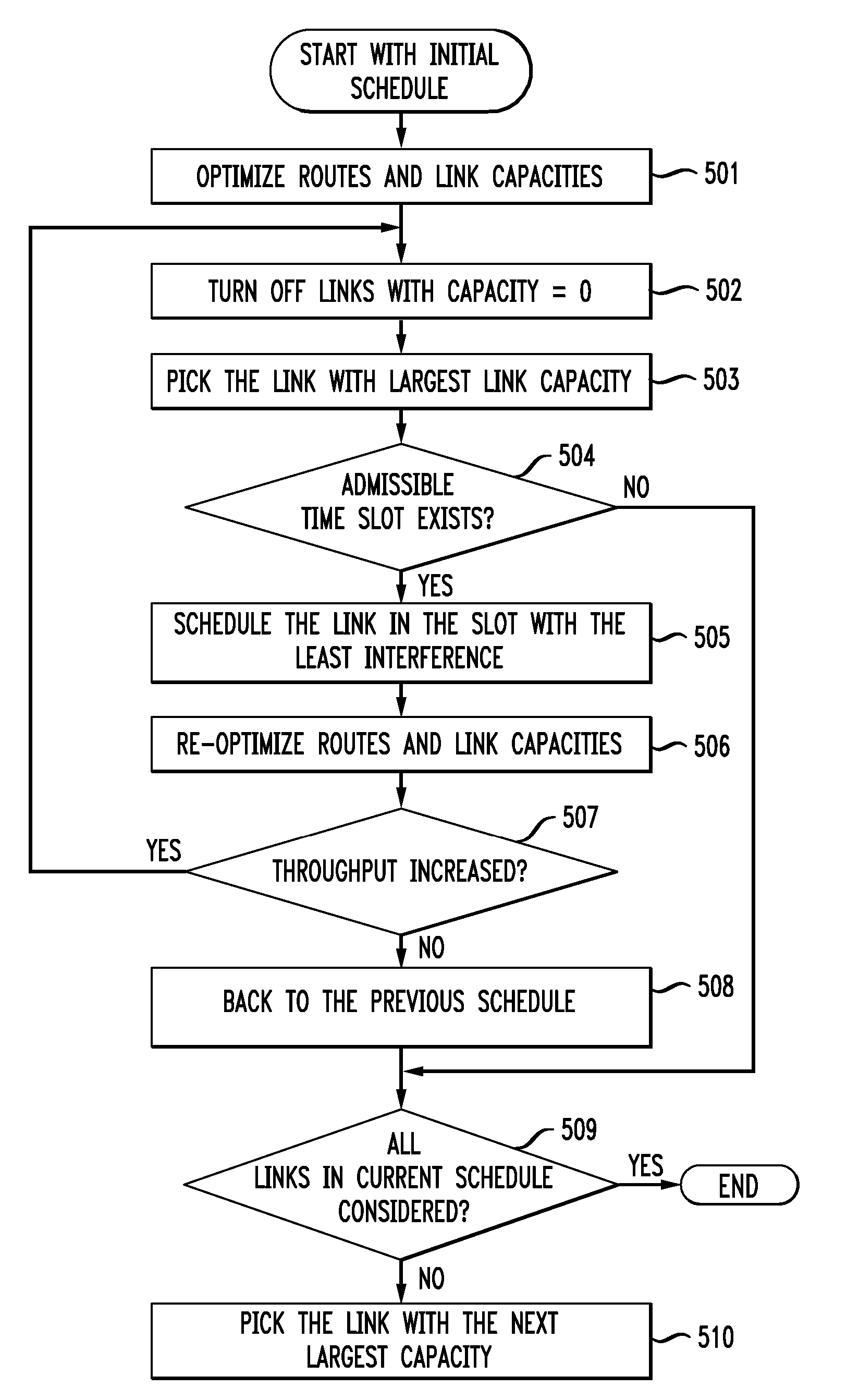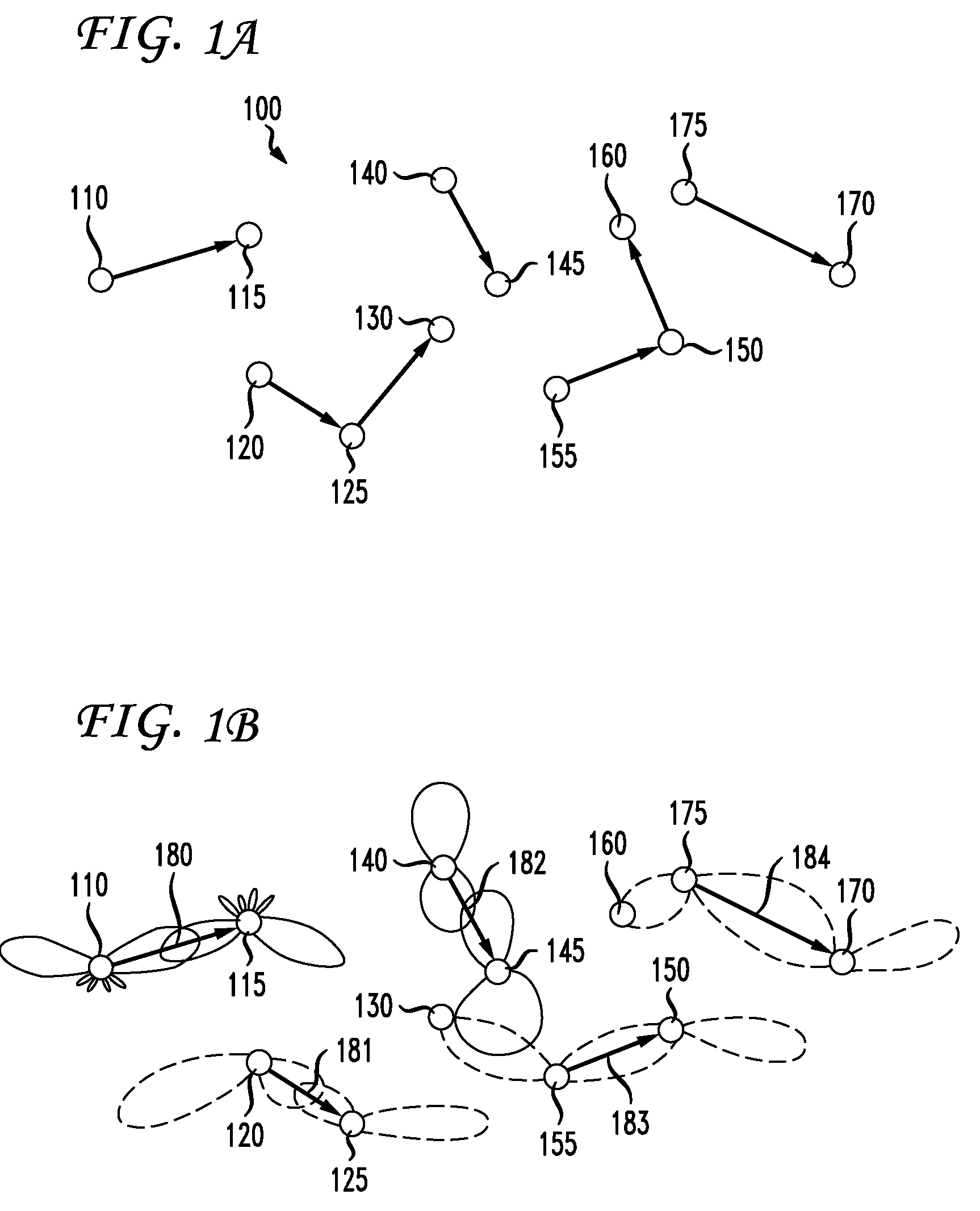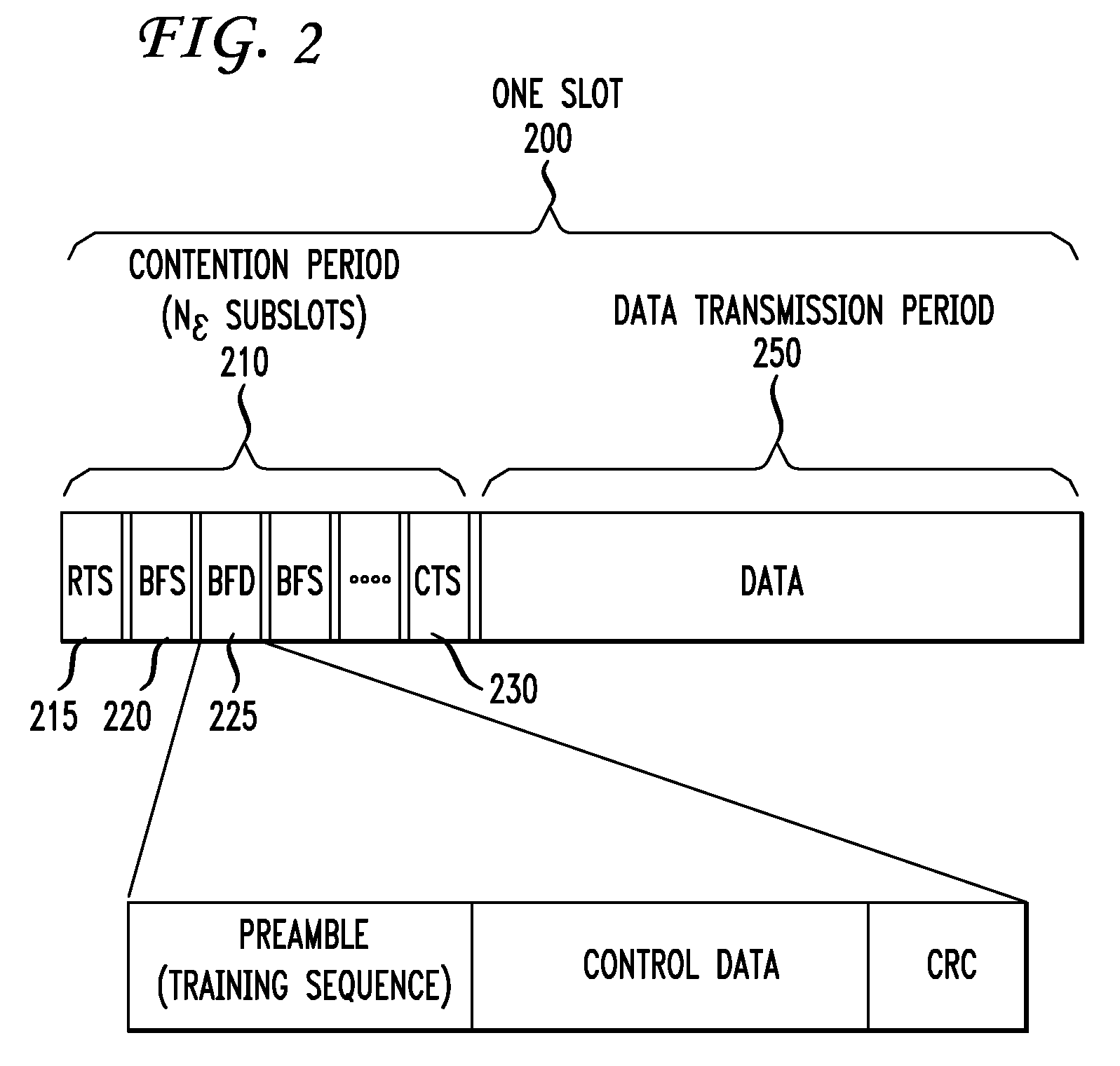Method and apparatus for cross layer resource allocation for wireless backhaul networks
a wireless backhaul network and resource allocation technology, applied in the field of medium access control in communication networks, can solve the problems of limiting network capacity by interference between neighboring network links, wireless radio resource allocation becomes increasingly complex, neighboring links cannot be actively transmitting simultaneously, etc., and achieve optimal network transmission throughput
- Summary
- Abstract
- Description
- Claims
- Application Information
AI Technical Summary
Benefits of technology
Problems solved by technology
Method used
Image
Examples
Embodiment Construction
[0015]FIG. 1A is a diagram illustrating a wireless communication network 100 suitable for implementing one embodiment of the present invention. Wireless network 100 has, illustratively, a plurality of nodes 110-175, each having one or more wireless antennas, such as the antennas of Access Points (APs) at each node. Nodes 110-175 illustratively have an array of multiple cooperating antennas so as to take advantage of multiple input, multiple output (MIMO) techniques, as discussed above. Each node is, for example and without limitation, a node in a wireless backhaul multi-hop network.
[0016]In order to communicate with one another, the nodes 110-175 of FIG. 1A may use the multiple antennas in those nodes to perform adaptive beamforming. As will be familiar to one skilled in the art, adaptive beamforming is a technique in which an array of antennas is able to achieve maximum reception in a specific angular direction by estimating the signal arrival from a desired direction (in the prese...
PUM
 Login to View More
Login to View More Abstract
Description
Claims
Application Information
 Login to View More
Login to View More - R&D
- Intellectual Property
- Life Sciences
- Materials
- Tech Scout
- Unparalleled Data Quality
- Higher Quality Content
- 60% Fewer Hallucinations
Browse by: Latest US Patents, China's latest patents, Technical Efficacy Thesaurus, Application Domain, Technology Topic, Popular Technical Reports.
© 2025 PatSnap. All rights reserved.Legal|Privacy policy|Modern Slavery Act Transparency Statement|Sitemap|About US| Contact US: help@patsnap.com



